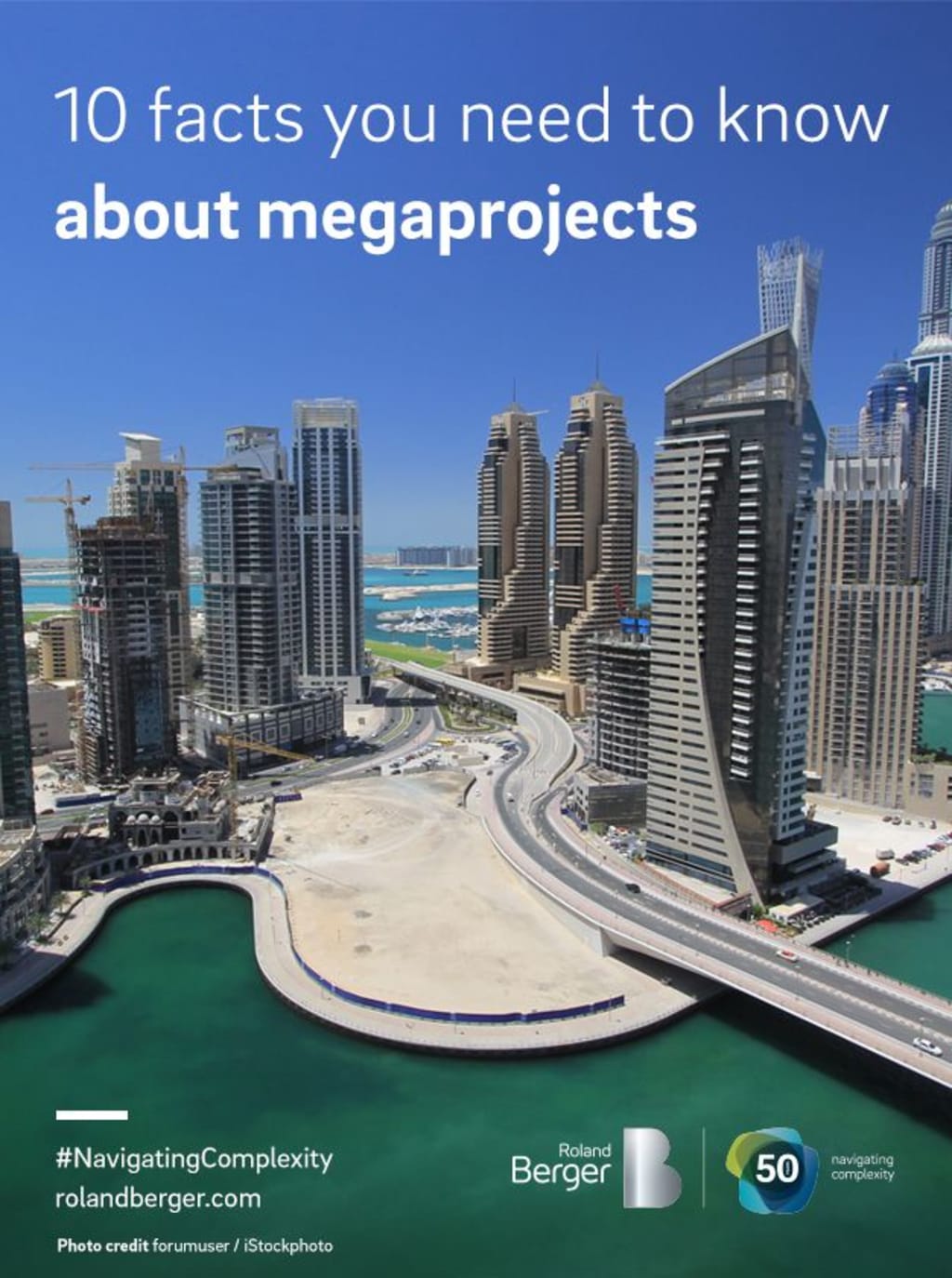"Exploring Europe's Mega Infrastructure Projects”
From Baltic Sea Tunnels to Scan Med Corridor

Europe is currently in the process of constructing a remarkable cross-country transport network. One of the key projects is the Fehmarn Belt Fixed Link, an 18km underwater tunnel in the Baltic Sea. This ambitious endeavor aims to enhance travel efficiency throughout the continent by connecting all corners of Europe through Roads, Railways, and shipping lanes. By doing so, it will facilitate seamless cross-border trade and integration. The Fehmarn belt link, in particular, will significantly reduce travel time between Hamburg and Copenhagen. The plan includes a 20 km long road and rail link that will allow trains to cross the strait in just 7 minutes, while cars will only take 10 minutes. Initially, alternative options such as a cable-stayed bridge and tunnel boring were considered, but they were ultimately dismissed due to concerns such as strong Eastern winds and unsuitable seabed conditions. The chosen design for the tunnel will be an immersed tube tunnel made up of prefabricated segments, making it the longest tunnel ever built. This impressive transport network is just one example of the mega projects taking place in Europe and Las Vegas, which are set to transform commerce and entertainment. The European Union is even supporting Finland's 10% share in the construction of a long-lasting tunnel to boost commerce. Meanwhile, in Las Vegas, the MSG Sphere, a $2.3 billion entertainment venue, is aiming to revolutionize the entertainment industry. Notably, the Las Vegas Sphere will feature the largest LED screen on Earth. However, construction delays caused by lockdowns and supply chain crises have led to budget escalations. Nevertheless, the Exosphere's programmable LED panels will still showcase a wide range of artistic content and serve as a captivating marketing attraction. The sphere, located at the Venetian, will truly revolutionize entertainment and host a variety of events. It is specifically designed to provide immersive experiences in cinema and performance, rather than for sports or traditional music venues. Additionally, the sphere will boast the second-largest fan zone on the circuit and offer live entertainment as well as guided tours conducted by robots.
Saudi Arabia's ambitious mega project, known as the mirror line, is poised to make a lasting impact on history. This colossal structure, standing at a towering height of 500m and stretching across a remarkable distance of 170km, is set to become an iconic symbol of human achievement. It forms an integral part of Saudi Arabia's Vision 2030 plan, which aims to reduce reliance on fossil fuels and revolutionize the nation's economy. The city's innovative design promotes sustainable living and efficient transportation, incorporating vertical farms, a marina, and a sports stadium elevated 300m above ground level. The city is divided into three distinct layers, comprising a pedestrian zone, a service layer housing shops, offices, and residential buildings, and a spine layer dedicated to transportation. However, Saudi Arabia faces significant challenges in realizing this ambitious project. The completion of massive infrastructure projects within the designated timeframe is hindered by past project delays, human rights concerns, and financial limitations. On a different note, the construction of high mountain bridges also presents its own set of challenges. The construction of the dual bridge, the world's highest, encountered seismic activity and adverse weather conditions. To ensure durability, aerospace materials were utilized. Similarly, the Chishui River Bridge overcame extreme geographical obstacles by constructing the deck offsite and employing 3D visualizations for precise placement. Another noteworthy mega project is the Hong Kong-Zhuhai-Macao Bridge, which holds significant geopolitical importance. This project incorporates a 6.7 km submerged tunnel and two artificial islands. Originally estimated at $10 billion, the project's cost escalated to approximately $20 billion due to delays and corruption. Lastly, it is worth exploring the top 10 most useless mega projects in the world. For instance, the H3 interstate in Hawaii, costing $1.3 billion, fails to lead to downtown Honolulu and disrupts important sites for native Hawaiians. Similarly, the Cadalral Central Airport in Spain went bankrupt and is currently being used to store grounded planes during the COVID-19 pandemic.
Forest City in Malaysia is facing challenges despite the initial excitement surrounding it. Initially envisioned as a modern utopia with strong backing from Chinese investors, the development has been hindered by the pandemic, restrictions on foreign property ownership, and sluggish sales. Moreover, the utilization of the Hong Kong-Macau-Zhuhai Bridge is limited by the requirement of a Golden Ticket and Crossing Permit, which are only granted to select high-profile individuals. With only 400 permits issued daily, there is speculation about the true purpose of the bridge. In Europe, the Mju nuclear power plant encountered financial difficulties, costing nearly $122 billion over 60 years before facing shutdown. On the other hand, Europe is embarking on ambitious infrastructure and mega-construction projects to shape its future. Notable global projects include the construction of the world's longest ship tunnel in Norway at $3.45 billion, the $5.7 billion expansion of Frankfurt International Airport to accommodate more passengers and cargo, and various railway projects aimed at improving travel efficiency and sustainability. These projects include the Brener Base Tunnel, which will connect railway networks through the Alps by 2032, the Leon Turin High-Speed Rail, a 270 km line designed to reduce pollution and enhance passenger travel despite facing criticism and obstacles, and the construction of a tunnel linking Danish and German islands, set to become the world's longest road and rail tunnel. Denmark and Germany are investing heavily in this project, with Denmark collecting tolls and Germany contributing to integrating it into their motorway network. This tunnel will replace the ferry service between Rugby and Putgarden, serving as a crucial link between Central Europe and Scandinavia for faster and more efficient transportation.
China is investing billions of dollars in mega projects, including the water diversion project aimed at balancing water resources between the north and south. The Yinhang Buhan Tunnel, the world's longest water tunnel, is a crucial part of this initiative. Additionally, China is working on a $43 billion Bohai Sea undersea tunnel project, spanning over 90 km. Despite facing delays due to environmental and economic concerns, construction is set to begin soon with a 10-year timeline. China is also heavily investing in renewable energy to reduce emissions by 2030, with Inner Mongolia's renewable energy project focusing on wind and solar power. This commitment to global carbon neutrality and economic development is driving significant investment. Despite challenges in transitioning away from coal, China's mega project spending is expected to remain high. In comparison, the United States is also undertaking ambitious mega projects in infrastructure, renewable energy, and scientific attractions. For example, the Gordie Howe International Bridge is set to see a significant increase in traffic by 2025, while the Madison Square Garden sphere in Las Vegas is facing a 9% cost surge but remains on track for completion by 2023. Major transportation infrastructure projects are ongoing, with a transportation study in the north guiding plans with a $6 billion construction budget. The Santa Clara project is transforming a former golf course into an $8 billion mixed-use development to boost the local economy and transportation network. In Austin, the Project Connect program aims to revamp transportation with new rail and bus lines, expected to cost around $7.1 billion and funded by municipal and federal sources. It is crucial to avoid construction mistakes to prevent financial losses and risks to lives. Numerous large-scale projects worldwide have encountered significant financial losses and wasted resources as a result of errors and miscalculations. Even minor architectural mistakes can have catastrophic consequences, such as building collapses or bridge failures. A bold decision was made to construct a towering structure of 915 feet on stilts, hanging over a church. However, this design choice rendered the building vulnerable during storms, necessitating major repairs. Engineers face numerous challenges in construction projects, particularly when dealing with unstable rock formations like anhydrite, which pose risks and complicate the construction process. The collapse of the I35 Bridge in Minneapolis due to a critical design flaw prompted investigations and raised concerns about safety. Berlin Brandenburg Airport experienced years of delays and cost overruns, with construction costs skyrocketing to triple the initial estimate, reaching a staggering $8.3 billion. These setbacks were attributed to bankruptcy, non-compliant fire protection measures, and failures to pass necessary acceptance tests. The airport's eventual inauguration took place in 2020, years after the originally set deadline. The Kiba Dam, spanning 579 meters across the Zambezi River, created the expansive Lake Kiba. Its construction in 1959 cost $480 million and tragically claimed the lives of 86 construction workers. However, it now generates an impressive 2011 megawatts of electricity, benefiting both Zambia and Zimbabwe. Dams like the Sayano-Shushinskaya Dam in Russia demonstrate remarkable resilience in the face of challenges. Standing as the 17th tallest dam globally, it was constructed in 1985 and features a magnificent design and a powerful hydropower station, paying tribute to the skilled contributors involved. The Grand Deance Dam is an awe-inspiring engineering achievement, anchored by a grout curtain and strategically positioned in a valley to harness water sources. It utilizes an intricate network of tunnels and penstocks to efficiently transport water, forming an integral part of the Clan Deance complex. The Jinping 1 Dam plays a crucial role in energy production and environmental protection. Its construction commenced in 2005 and concluded in 2014, boasting an impressive capacity of 3600 megawatts.
In addition to its energy production capabilities, the dam serves various other purposes such as flood protection, erosion prevention, and sustainable development. The Three Gorges Dam plays a significant role in China's electricity grid, making it a major contributor. Despite facing criticism regarding construction costs and seismic risks, the dam firmly establishes itself as a powerhouse for power generation. Its environmental impact, accounting for 1.43% of China's electricity generation, holds promise for environmental benefits. Moving on to Chonga Sky City in Chunga, Hunan, China, this skyscraper stands at an impressive height of 838 meters and follows a unique construction timeline. It boasts earthquake resistance, energy efficiency, and sustainability, and utilizes modern materials, all of which come for $1.46 billion. The influence of Egyptian art deco style can be seen in the architectural designs of the Bur Mubarak Al Kabir Tower in Kuwait. This tower draws inspiration from Egyptian obelisks and incorporates elements that depict the Nile River in its design. Addressing Tokyo's population growth, the Sky Mile Tower stands tall at 1,700 meters and is part of the next Tokyo concept. The X seed 4000 and Tokyo Tower of Babel are ambitious projects aimed at accommodating massive populations. The X seed 4000, constructed using 3 million tons of steel, is designed to shield occupants from air pressure and weather fluctuations, but it remains vulnerable to earthquakes and tsunamis in the Pacific Ring of Fire. On the other hand, the Tokyo Tower of Babel is planned to be a staggering 10 km tall and will support up to 30 million people over a 100-year construction period, with a budget of 3 trillion yen. In Lagos, the Echo Atlantic City project aims to boost real estate and combat erosion. The city is divided into sections designated for various purposes, including office spaces, hotels, educational institutions, administrative buildings, recreational areas, industrial research facilities, and even space exploration. The project was initiated in 2009 due to the history of erosion in Lagos. Currently, the development of Echo Atlantic City is in progress, with a residential complex and skyscrapers being constructed. Echo Boulevard serves as the focal point for the business district. However, the Echo Atlantic Mega project faces challenges related to sustainability and environmental concerns.
Land reclamation poses inquiries regarding the sustainability of the project and its impact on the coastline. Dredging and construction operations raise worries about the environmental consequences and the displacement of communities. Turkey reveals an ambitious dam project. The dam is set to produce sufficient electricity to supply a million households and decrease the nation's reliance on costly oil and gas imports. Turkey's emphasis on hydropower involves 17 hydroelectric dams along the Koru River, with the Usfi dam contributing to the national power grid. The construction of the tallest Arch Dam in Turkey and the fifth tallest globally. Excavation for tunnels and the establishment of a concrete facility; Challenges encountered during construction, including persistent fog and snow. The USFI Dam initiative brings economic advantages but jeopardizes local livelihoods. The dam is expected to inject over $220 million into the Turkish economy annually, paying off the $2 billion project within ten years. Nevertheless, thousands of residents have been displaced and relocated multiple times due to flooding caused by the dam, sparking protests and concerns about livelihoods. Criticism of forced displacement due to dam construction. The Yusuf Eli Dam in Turkey resulted in significant biodiversity loss, endangering rare plant species. Authorities justify the dam as a necessary sacrifice for progress despite environmental worries. Safety precautions are essential during demolitions. The tragic loss of a worker underscores the significance of safety measures. Engineering safety protocols saved crane operators from harm. Demolition accidents. Mishaps during demolition operations can lead to unforeseen consequences, resulting in damage. Thorough planning and execution are vital to ensure safety and prevent accidents
About the Creator
Isaac Ekow Anyidoho
A calm person with a cascading mind filled with ideas of my own and know that; I can make a difference with the support of people like you. Thank you.
Enjoyed the story? Support the Creator.
Subscribe for free to receive all their stories in your feed. You could also pledge your support or give them a one-off tip, letting them know you appreciate their work.





Comments
There are no comments for this story
Be the first to respond and start the conversation.